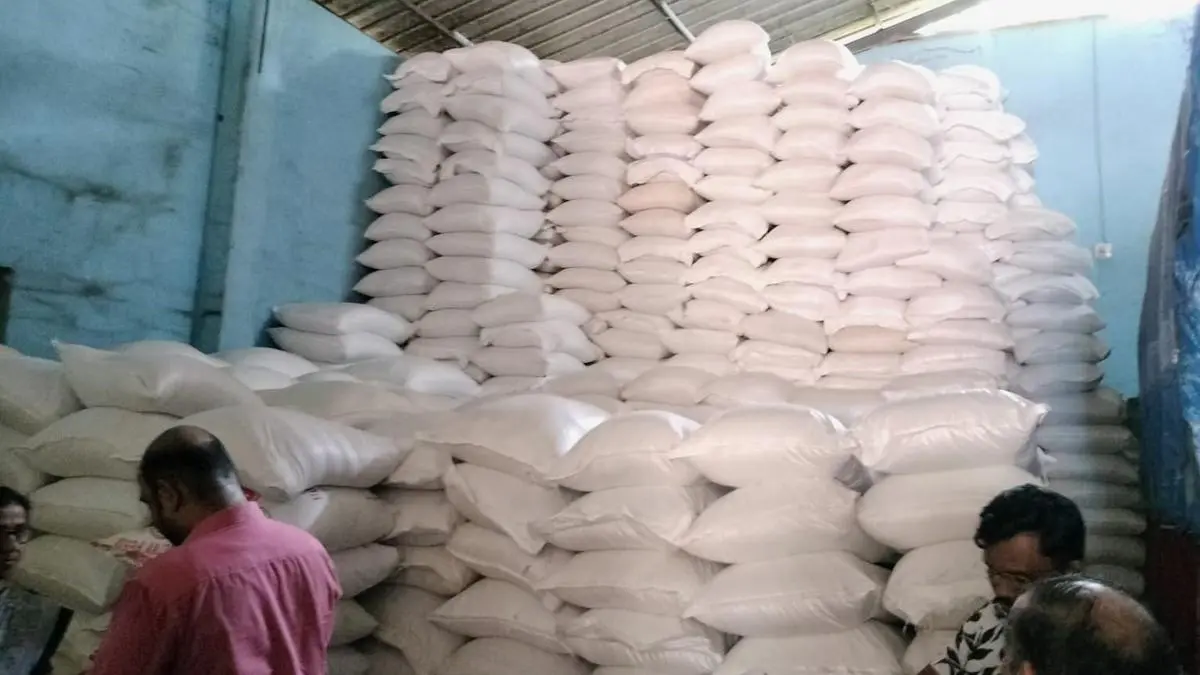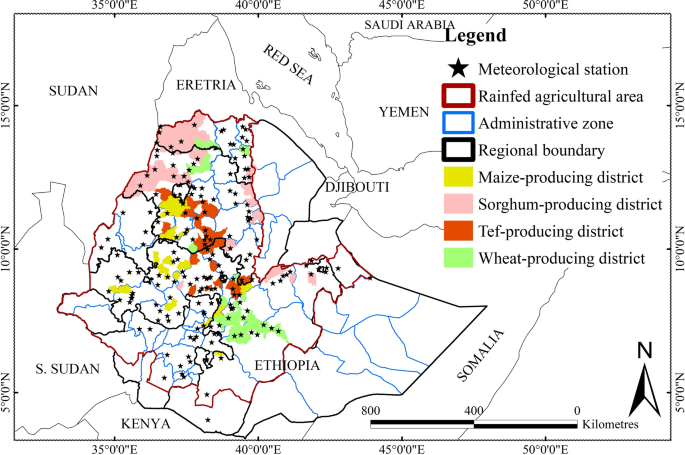Report on Coal Char as a Soil Amendment and its Contribution to Sustainable Development Goals
Introduction
A study conducted by researchers at the University of Wyoming’s School of Energy Resources (SER) examines the efficacy of carbon-rich products derived from coal as a soil amendment. The research, published in the journal Sustainability, focuses on enhancing agricultural productivity in challenging semi-arid environments. This initiative, led by SER’s Center for Carbon Capture and Conversion (CCCC), is aligned with developing high-volume, alternative applications for Wyoming coal, thereby contributing to several key Sustainable Development Goals (SDGs).
Research Objectives and Methodology
The primary objective was to assess the impact of coal char on soil health and crop yield in comparison to other common amendments. The methodology involved a multi-year field study with a focus on sustainable agricultural practices.
- Study Duration: A two-year field study was conducted to gather long-term data.
- Location and Soil Type: The research took place at the Powell Research and Extension Center in Wyoming, utilizing semi-arid, sandy clay loam soil.
- Crop: Sugar beets were selected as the test crop.
- Comparative Amendments: The study evaluated the relative impacts of four different treatments:
- Coal Char (derived from Powder River Basin coal)
- Biochar (the industry standard)
- Inorganic Fertilizer
- Manure
- Assessed Parameters: Researchers measured soil properties, plant growth indices, and nutrient dynamics in both the soil and the plants.
Key Findings and Soil Health Improvements
The study revealed that the amendments primarily enhance agricultural output by improving soil quality, a foundational element for achieving Zero Hunger (SDG 2) and protecting Life on Land (SDG 15). Rather than directly increasing crop yield, the amendments worked indirectly by significantly improving soil physical properties.
- Improved Soil Structure: The application of coal char led to increased soil porosity and water holding capacity. This is critical for sustainable water management in agriculture.
- Enhanced Plant Growth: Improved soil conditions boosted overall plant growth and nutrient content in both the soil and the sugar beets.
- Yield Potential: Specific application rates of coal char, when used within an integrated nutrient management framework, contributed to higher sugar beet yields, highlighting its potential as an effective tool for sustainable farming.
Alignment with Sustainable Development Goals (SDGs)
This research program makes significant contributions to the global sustainability agenda by addressing multiple SDGs through innovative industrial and agricultural practices.
- SDG 2: Zero Hunger: By enhancing soil health and improving the productivity of crops like sugar beets in semi-arid soils, this research directly supports the goal of ending hunger, achieving food security, and promoting sustainable agriculture.
- SDG 15: Life on Land: The use of coal char as a soil amendment improves soil structure, prevents nutrient runoff, and increases water retention. These outcomes help combat land degradation and desertification, which are critical targets for protecting terrestrial ecosystems.
- SDG 12: Responsible Consumption and Production: The project champions sustainable production patterns by creating a value-added agricultural product from coal, providing a high-volume alternative to combustion and advancing circular economy principles.
- SDG 8: Decent Work and Economic Growth: By creating a product that benefits both the extractive and agricultural sectors in Wyoming, this initiative fosters diversified, resilient, and sustainable economic growth.
- SDG 9: Industry, Innovation, and Infrastructure: The research represents a key innovation in repurposing a traditional resource for a sustainable application, fostering industrial innovation that supports resilient agricultural infrastructure.
Conclusion and Future Implications
The study confirms that Wyoming coal char is a promising and effective soil amendment for enhancing agricultural productivity, particularly in challenging semi-arid systems. This application provides a viable, high-volume alternative to burning coal, creating a pathway that supports both economic and environmental sustainability. The continued positive results of this long-term project underscore the potential for innovative solutions to bridge traditional industries with the goals of a sustainable future.
Analysis of Sustainable Development Goals in the Article
1. Which SDGs are addressed or connected to the issues highlighted in the article?
- SDG 2: Zero Hunger – The research focuses on enhancing agricultural productivity and improving crop yields.
- SDG 6: Clean Water and Sanitation – The article mentions that soil amendments like char can prevent nutrient and fertilizer runoff, which relates to improving water quality.
- SDG 8: Decent Work and Economic Growth – The project aims to create economic benefits for Wyoming’s extractive and agricultural sectors by developing new, high-volume uses for coal.
- SDG 9: Industry, Innovation, and Infrastructure – The study represents scientific research and innovation aimed at creating new, sustainable products and applications from existing resources.
- SDG 12: Responsible Consumption and Production – The research promotes a sustainable and efficient use of a natural resource (coal) by converting it into a value-added product instead of burning it.
- SDG 13: Climate Action – The work is conducted by the “Center for Carbon Capture and Conversion,” and finding alternatives to burning coal is a key climate mitigation strategy. Using char in soil can also act as a form of carbon sequestration.
- SDG 15: Life on Land – The core of the study is about improving soil health, increasing water retention, and enhancing soil properties in semi-arid lands, which directly addresses land degradation.
2. What specific targets under those SDGs can be identified based on the article’s content?
-
SDG 2: Zero Hunger
- Target 2.4: By 2030, ensure sustainable food production systems and implement resilient agricultural practices that increase productivity and production… and that progressively improve land and soil quality. The article directly addresses this by evaluating coal char as a soil amendment to “enhance agricultural productivity,” “maximize crop productivity in semi-arid systems,” and “enhance soil health.”
-
SDG 6: Clean Water and Sanitation
- Target 6.3: By 2030, improve water quality by reducing pollution… The article mentions that biochar, which is being compared to coal char, is used to “prevent nutrient and fertilizer runoff.” This directly relates to reducing agricultural pollution in water bodies.
-
SDG 8: Decent Work and Economic Growth
- Target 8.2: Achieve higher levels of economic productivity through diversification, technological upgrading and innovation… The research supports this by developing “high-volume alternative uses” for Wyoming coal, which diversifies its application beyond burning and creates value for both the “extractive and agricultural sectors in Wyoming’s economy.”
-
SDG 9: Industry, Innovation, and Infrastructure
- Target 9.5: Enhance scientific research, upgrade the technological capabilities of industrial sectors… and encourage innovation. The article is a direct result of scientific research from the University of Wyoming’s School of Energy Resources, which is developing an “entire suite of products derived from Wyoming coal,” representing significant innovation.
-
SDG 12: Responsible Consumption and Production
- Target 12.2: By 2030, achieve the sustainable management and efficient use of natural resources. The project finds an alternative, non-combustion use for coal, turning it into a soil amendment. This represents a more efficient and sustainable management approach for this natural resource.
-
SDG 13: Climate Action
- Target 13.3: Improve education, awareness-raising and human and institutional capacity on climate change mitigation… The research is conducted by the “Center for Carbon Capture and Conversion,” an institution dedicated to developing technologies that can mitigate climate impacts, such as finding alternatives to burning fossil fuels.
-
SDG 15: Life on Land
- Target 15.3: By 2030, combat desertification, restore degraded land and soil… and strive to achieve a land degradation-neutral world. The study’s focus on improving soil properties in “semiarid, sandy clay loam soil” by “increasing soil porosity and water holding capacity” is a direct effort to restore soil health and combat land degradation.
3. Are there any indicators mentioned or implied in the article that can be used to measure progress towards the identified targets?
-
For Target 2.4 (Sustainable Agriculture):
- Sugar beet yields: The article explicitly mentions that “certain application rates of coal char contributed to higher sugar beet yields.”
- Plant growth indices: The study was conducted to assess impacts on “plant growth indices.”
- Nutrient content in soil and plants: The research measured “soil and plant nutrient dynamics” and found that amendments were “key to enhancing nutrient levels.”
-
For Target 6.3 (Water Quality):
- Nutrient and fertilizer runoff levels: The article implies this as a measurable benefit, stating that char can be used to “prevent nutrient and fertilizer runoff.” Progress would be measured by the reduction of these pollutants in nearby water sources.
-
For Target 8.2 (Economic Productivity):
- Volume of coal repurposed: The goal of finding “high-volume alternative uses” implies that the tonnage of coal converted to char would be a key indicator of economic diversification.
-
For Target 9.5 (Research and Innovation):
- Number of scientific publications: The article itself is a publication, and it is noted as “one of several publications to result from the multiyear effort,” indicating that research output is a measure of progress.
-
For Target 15.3 (Land Restoration):
- Soil porosity: The study found that amendments work by “significantly improving soil physical properties, such as increasing soil porosity.”
- Water holding capacity: This is another key soil property that the study identified as being significantly improved by the amendments.
4. Summary Table of SDGs, Targets, and Indicators
| SDGs | Targets | Indicators |
|---|---|---|
| SDG 2: Zero Hunger | 2.4: Ensure sustainable food production systems and improve land and soil quality. |
|
| SDG 6: Clean Water and Sanitation | 6.3: Improve water quality by reducing pollution. |
|
| SDG 8: Decent Work and Economic Growth | 8.2: Achieve economic productivity through diversification and innovation. |
|
| SDG 9: Industry, Innovation, and Infrastructure | 9.5: Enhance scientific research and encourage innovation. |
|
| SDG 12: Responsible Consumption and Production | 12.2: Achieve the sustainable management and efficient use of natural resources. |
|
| SDG 13: Climate Action | 13.3: Improve institutional capacity on climate change mitigation. |
|
| SDG 15: Life on Land | 15.3: Combat desertification and restore degraded land and soil. |
|
Source: uwyo.edu







